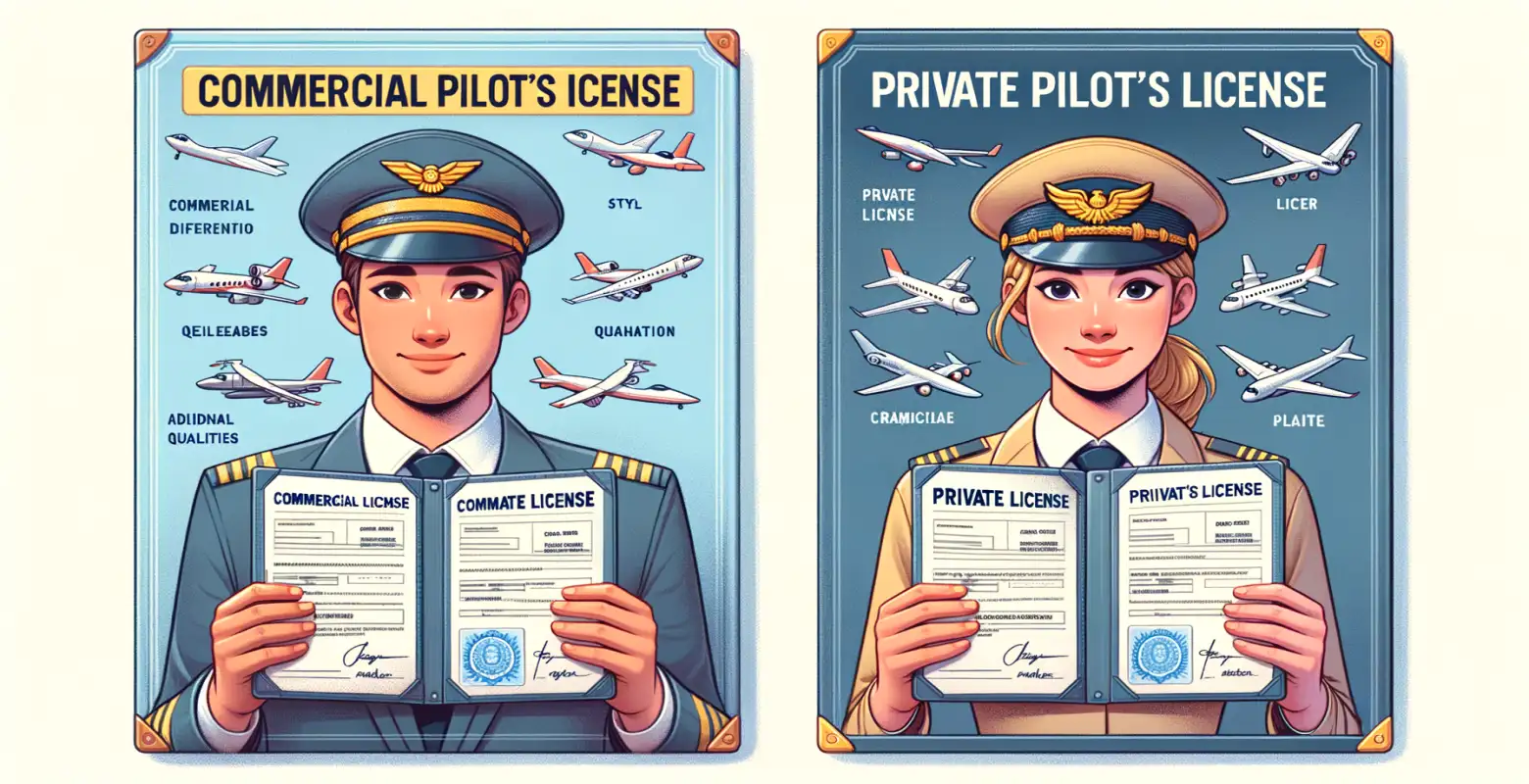Differences between a commercial pilot license and a private pilot license
Introduction
Aviation has fascinated people for centuries, and the opportunity to soar into the skies has been a dream for many generations. In today's world, thanks to technological advancements and the development of aviation infrastructure, piloting aircraft has become accessible to a wider range of people. However, before someone takes the controls, it is necessary to acquire the appropriate qualifications. In this context, there are two main types of pilot licenses: the Private Pilot License (PPL) and the Commercial Pilot License (CPL). In this article, we will discuss the differences between these two licenses, their requirements, applications, and career prospects.
Differences in Training Requirements
One of the main differences between a private pilot license and a commercial pilot license are the training requirements. To obtain a PPL, a candidate must complete at least 45 hours of flight, with a minimum of 10 hours being solo flights. On the other hand, a CPL requires much more advanced training, including a minimum of 150 hours of flight, as well as meeting additional theoretical and practical requirements.
Private Pilot License (PPL): This is the basic aviation license that allows for the piloting of non-commercial aircraft. The training covers the basics of navigation, meteorology, flight principles, and emergency procedures. Candidates must pass both theoretical and practical exams.
Commercial Pilot License (CPL): In addition to a greater number of flight hours, CPL training includes more advanced topics such as flying in challenging weather conditions, advanced navigation, and airport operational procedures. Candidates must also undergo training for multi-engine aircraft flights and pass more demanding theoretical tests.
Career Opportunities and License Applications
PPL and CPL licenses differ not only in training requirements but also in career opportunities and applications. The PPL is suitable for individuals who want to fly recreationally, without the ability to earn a salary. It is an ideal solution for aviation enthusiasts who want to fly in their free time.
Private Pilot License: Allows for piloting of aircraft solely for recreational or non-commercial purposes. Holders of this license can fly with family and friends, but cannot charge for passenger or cargo transportation.
Commercial Pilot License: Opens doors to a career in commercial aviation. CPL holders can work as airline pilots, cargo pilots, tour pilots, and in agricultural aviation. The CPL is also often the first step towards obtaining an Airline Transport Pilot License (ATPL), which is required for working as a captain in airlines.
Legal Aspects and Limitations
Another aspect that sets these two licenses apart are the legal aspects and related limitations. PPL holders must adhere to specific regulations regarding private flights, which differ from those applicable to professional pilots.
Private Pilot License: Holders of this license must comply with regulations concerning non-commercial flights, meaning they cannot charge any fees for their services. There are also restrictions on night flights and flights in IFR (instrumental) conditions, which require additional qualifications.
Commercial Pilot License: Allows for the performance of commercial flights, which entails the need to adhere to more stringent safety regulations. CPL holders can fly in more challenging weather conditions and conduct night flights, which are essential for working in many sectors of commercial aviation.
Career Development Prospects
The choice between a PPL and CPL license can have a significant impact on a candidate's future career. For many individuals starting their aviation journey with a PPL, this license serves as the initial step towards furthering their aviation career.
Private Pilot License: For those interested solely in recreational flying, the PPL is sufficient. However, for those looking to advance professionally, the PPL can be the beginning of the path to acquiring additional qualifications such as CPL or ATPL.
Commercial Pilot License: Holding a CPL opens up numerous career opportunities and is often seen as an intermediate step towards obtaining an ATPL, which is necessary for serving as a captain in airlines. Professional pilots can also specialize in various fields such as cargo flights, medical flights, surveillance flights, or agricultural operations.
The Future and Trends in the Aviation Industry
The aviation industry is a dynamically growing sector, and the demand for qualified pilots is increasing every year. The rise in the number of passengers traveling by air and the development of new technologies are influencing changing requirements for pilots.
Technology and Automation: With technological advancements, automated systems are playing an increasingly important role in aviation, requiring pilots to have skills in operating advanced navigation and control systems. Nevertheless, the human factor remains crucial, especially in emergency situations.
Demand for Pilots: It is predicted that in the coming years, the demand for pilots will continue to rise, especially in developing countries where aviation infrastructure is expanding, and the number of commercial flights is increasing.
Summary
Both the private pilot license and commercial pilot license offer different opportunities and career paths in aviation. The choice of the appropriate license depends on individual needs and career goals. PPL is ideal for aviation enthusiasts who want to fly recreationally, while CPL opens doors to a career in commercial aviation. Regardless of the choice, both licenses require commitment, responsibility, and continuous skill improvement. In the dynamically evolving world of aviation, qualified pilots are and will continue to be essential, making this career path extremely attractive.






Number of comments: 0